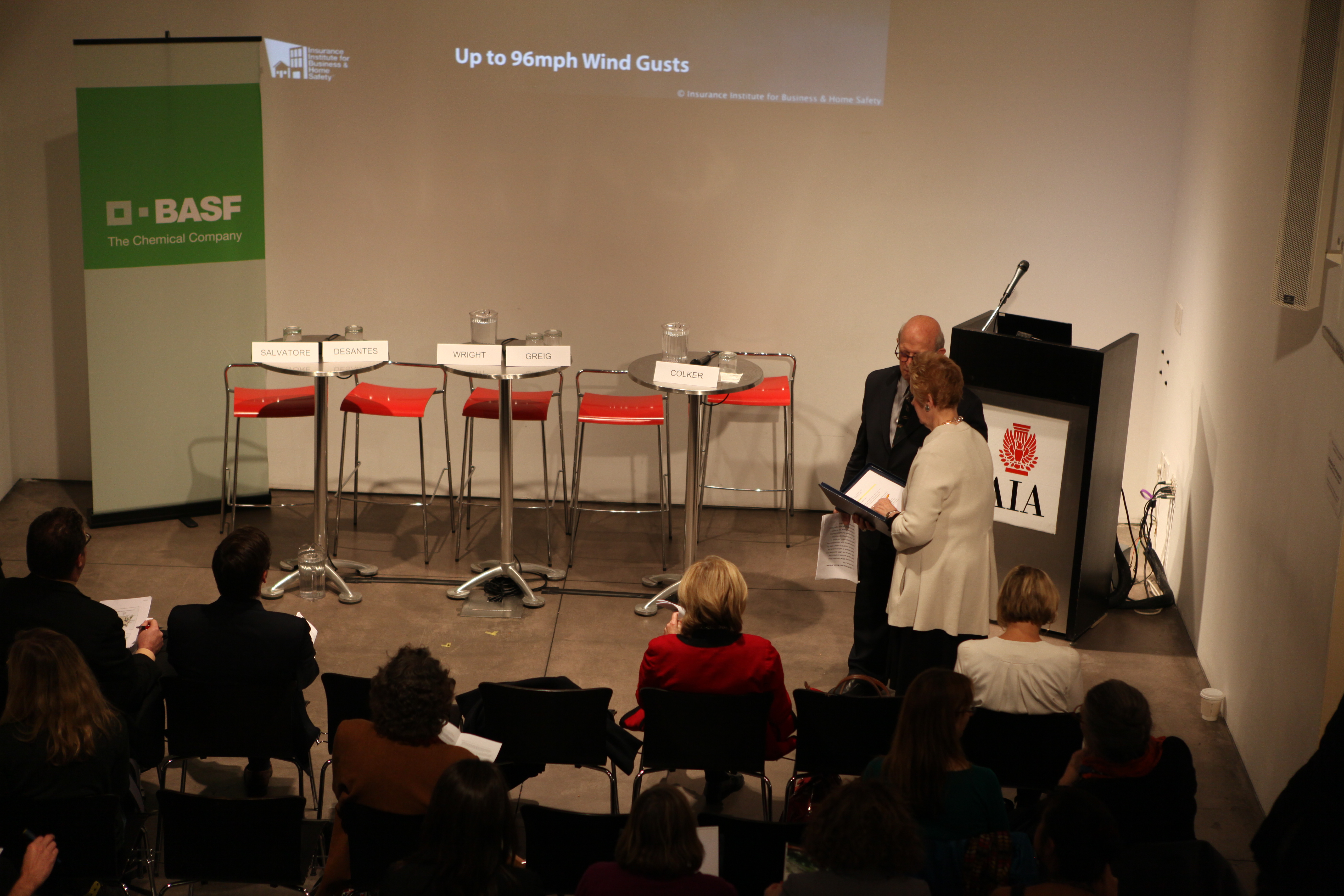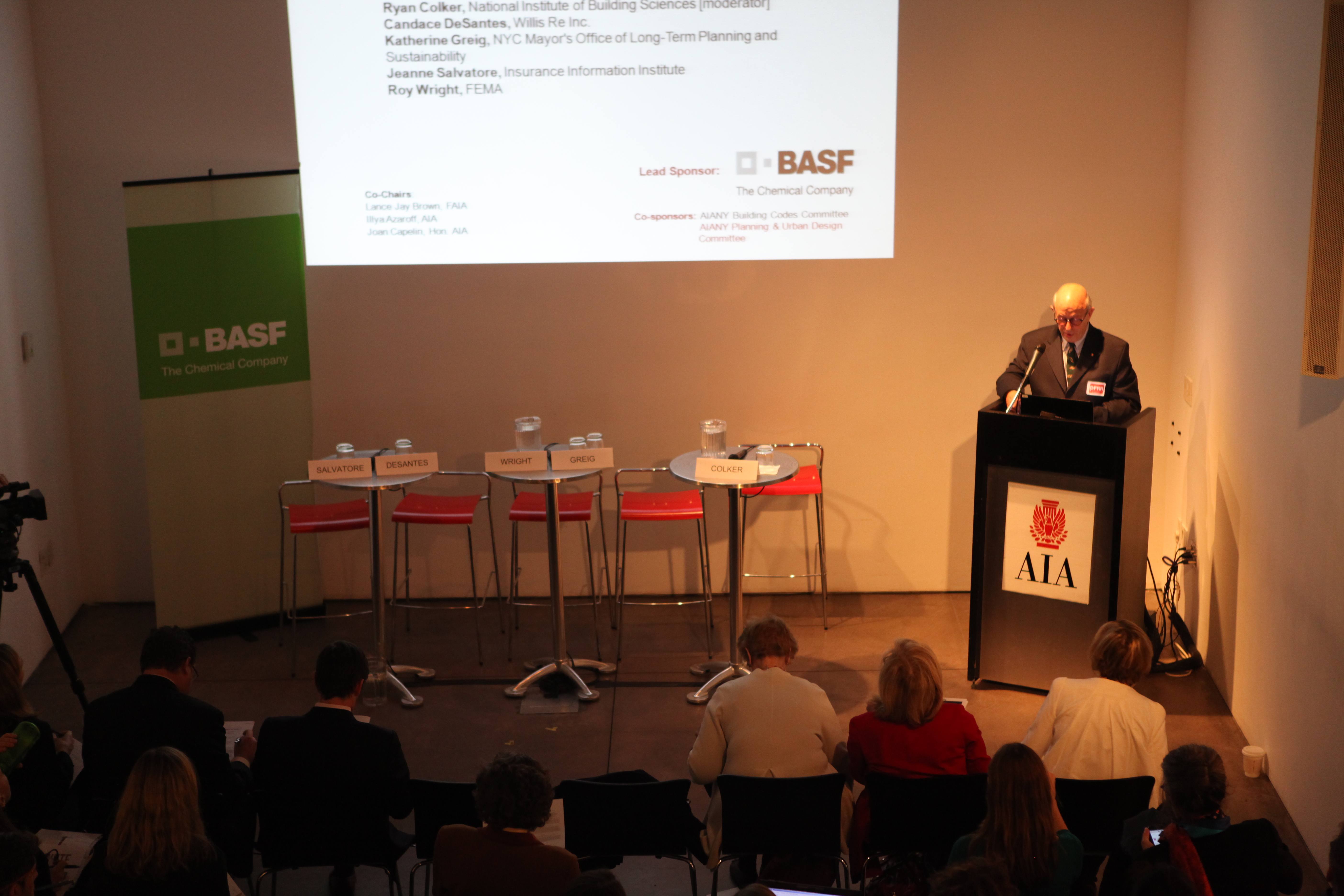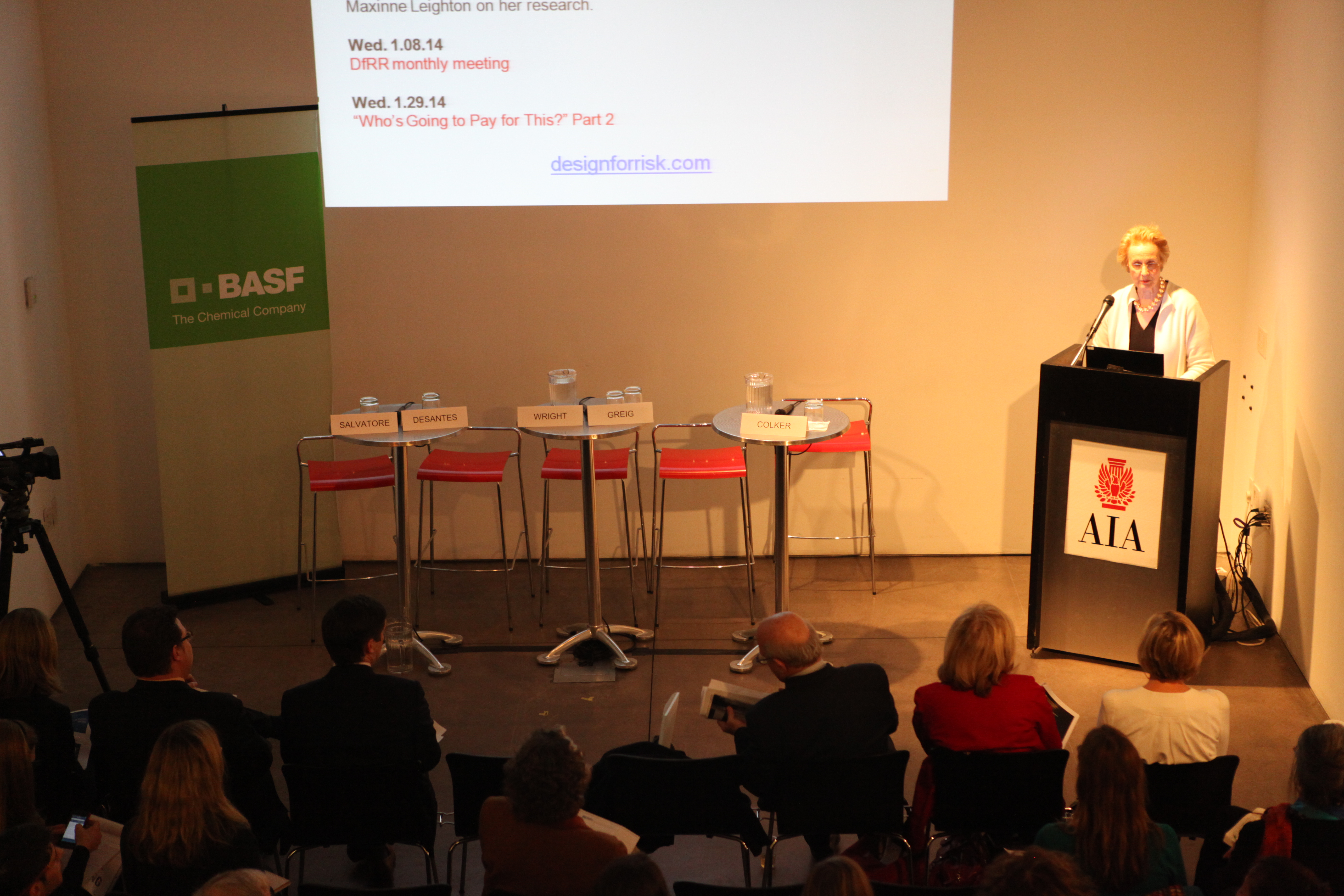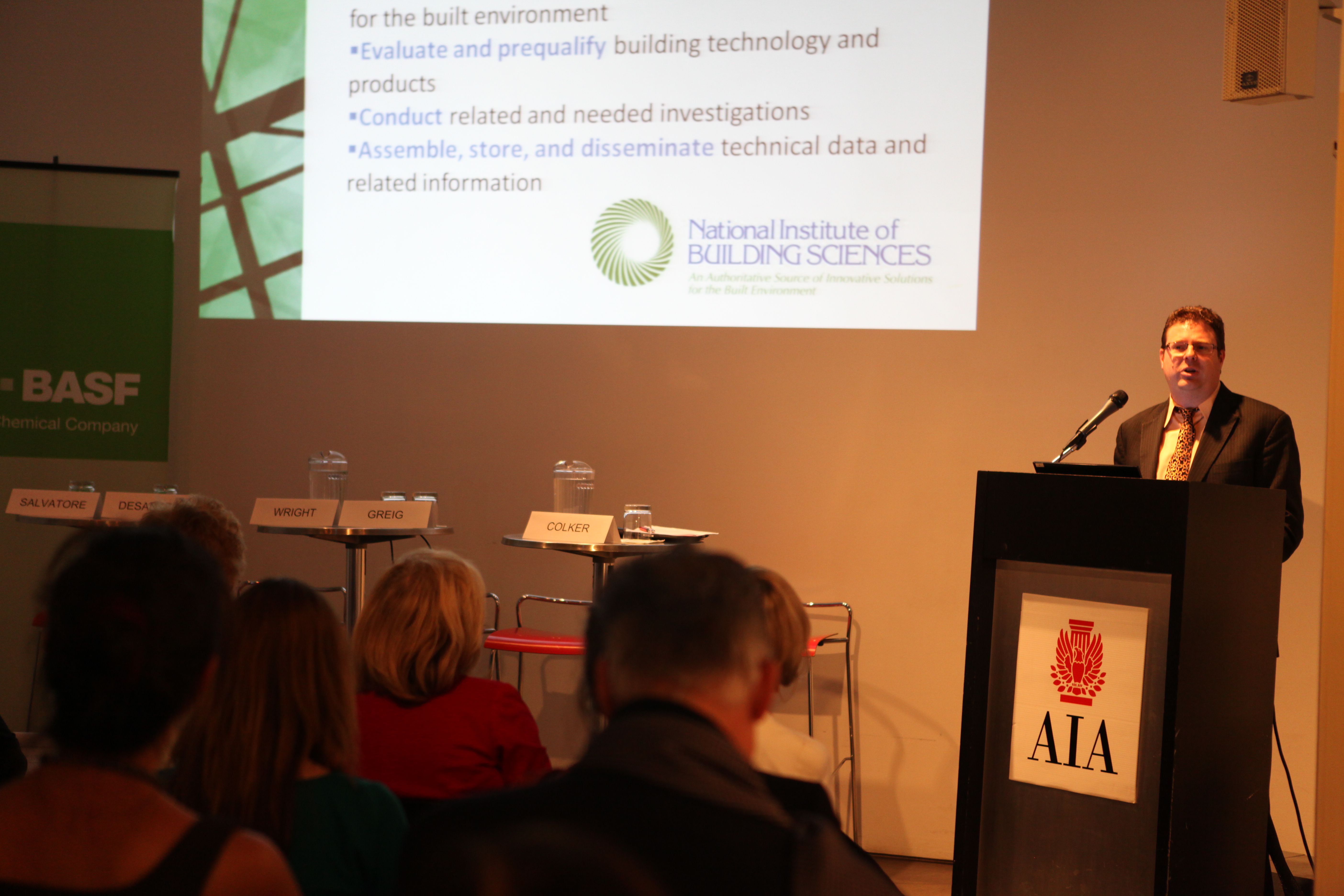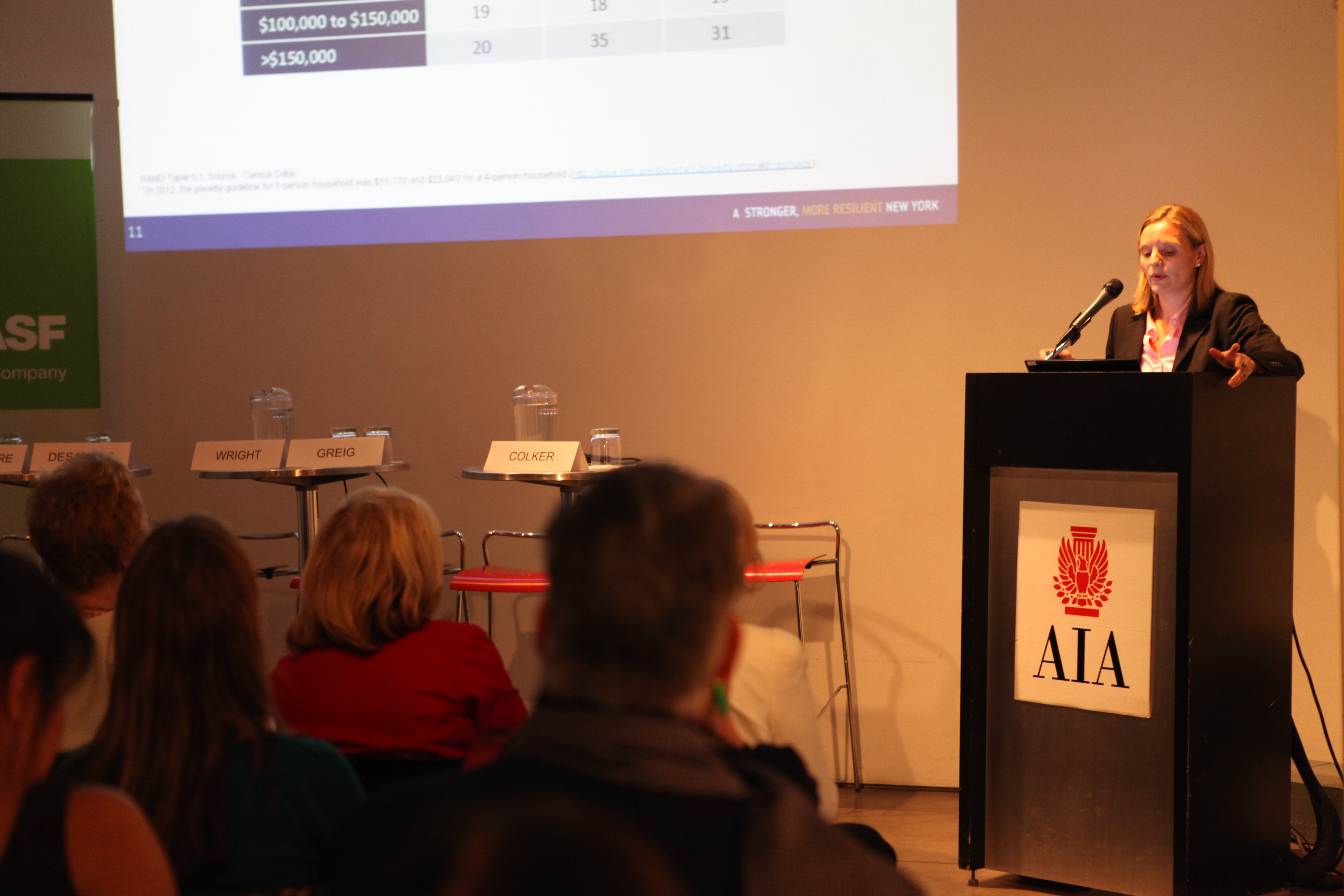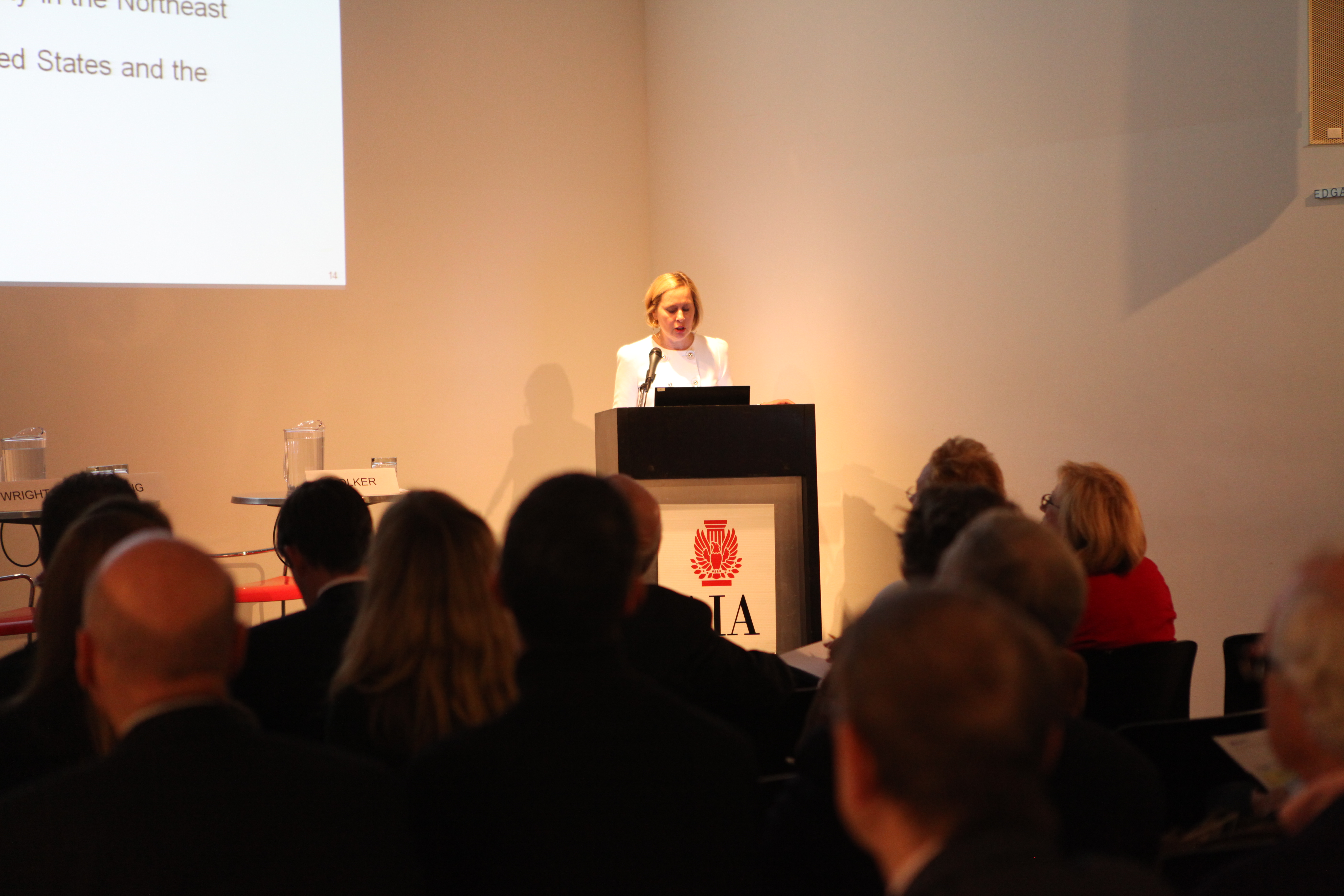by: Sabrina Wirth
On 11.13.13, the Center for Architecture’s Tafel Hall was packed with notebook-wielding architects and architecture-appreciating professionals. The word “resilient” and “resiliency” buzzed throughout the conversations in the minutes before the presentations started, then the room quieted down in anticipation of the imminent flood of information on the subject of…. Insurance. That’s right, insurance. As Joan Capelin, Hon. AIA, co-chair of the AIANY Design for Risk and Reconstruction Committee (DfRR), said, “No one pays attention to this issue until there’s a tragedy,” and, more lightheartedly: “The issue of insurance is like a tea bag – you never know how strong it is until it’s in hot water.” And right now, we’re in hot water.
To best help define issues and answers on this subject, the DfRR Committee, established by AIANY to provide a forum for greater risk awareness, assembled a group of high-level specialists from the insurance and reinsurance industries, FEMA/FIMA, the Mayor’s Office of Long-Term Planning & Sustainability, and the National Institute of Building Sciences.
The first presenter was Jeanne Salvatore, Senior Vice President for Public Affairs at the Insurance Information Institute in New York City. Her office is best described in her own words as a type of “insurance think tank,” whose mission is to improve the understanding of insurance. It was interesting to see how few people could answer her question of whether or not the term “Acts of God” was mentioned in U.S. property insurance policies. In fact, the term is not present at all, yet most people think it is. Floods and earthquakes are only covered by separate policies, which may be unaffordable to many people, leaving them extremely vulnerable. However for those who can afford extra insurance, they should know that coverage for basements is limited, in which case it is a good idea to keep valuables on higher floors!
The estimated total of privately-insured claims from Hurricane Sandy amounted to 1.52 million, with an estimated $18.75 billion in insured losses. In contrast, Hurricane Katrina produced 1.74 million claims and $48.7 billion in losses. Although in 2012 New York ranked as the #1 most exposed state to hurricane loss, only about 5% of homeowners with basic insurance coverage were motivated to buy flood insurance.
The second presenter, Candace DeSantes, is the Senior Vice President of Willis Re, a reinsurance company with a history dating back to 1828. Willis Re insures insurance companies during times of “unanticipated catastrophes,” when the damage claims accumulate to a number that is larger than most insurance companies can handle. Her company determines how to “quantify and manage that risk.” According to Swiss Re (the company that covers global events), Superstorm Sandy caused an estimated $70 billion in damage and $35 billion in insured losses; 650,000 houses were destroyed or damaged. These numbers reflect the actual financial loss from Sandy, while the previous numbers that Salvatore gave represent the monetary value returned to policyholders in the wake of the hurricane. Only half of the financial losses were regained through insurance, but for those who did not have hurricane or flood insurance, the gains were much less.
DeSantes stated that in 2012 alone, the U.S. experienced 11 major storms, which had a combined cost of more than $58 billion (to Willis Re). As long as climate change continues to produce these effects, the reinsurance industry will be faced with major challenges going forward.
The next two presenters, Roy E. Wright, FEMA’s Deputy Associate Administrator for Mitigation, and Katherine Greig, Senior Policy Advisor, NYC Mayor’s Office of Long-Term Planning and Sustainability, gave a more political perspective on the issue of insurance. Wright spoke of building codes that would create disaster resilient buildings, and informed the audience that “elevation matters” in terms of insurance policy costs: “The higher you build, the less the insurance policy will cost.” Therefore, if you live in a low-rise housing unit, you don’t have too many options.
Wright spoke of the United States’ population growing by an estimated 70 million people in the next 50 years, meaning more people will be vulnerable to damages caused by the environment. The solution that he could see was to enforce building codes, and advocated for architects to help convince homeowners to build under these codes since “architects are the most trusted professionals when dealing with new design standards.”
Greig provided insight from inside the mayor’s office. She advocated that architects find new, creative solutions in building for resiliency besides elevation, and to initiate education campaigns on disaster relief and insurance for the public, such as this AIANY program. One slide from her presentation caused visible anxiety in the room: homeowners with insurance policies will be paying rates determined by the “current risk” as a result of the Biggert-Waters Act passed by Congress in July 2012. Furthermore, all homeowners of a one- to four-family structure with a mortgage are subject to mandatory purchase of flood insurance. The “current risk” is determined by FEMA’s 1983 Flood Insurance Rate Map (FIRM). However, 80% of structures in the high-risk zones, according to the FIRM were built before 1983, which means that, because of Biggert-Waters, insurance premiums will increase.
The presentations concluded with moderator Ryan Colker, Director of the Consultative Council and Presidential Advisor to the National Institute of Building Sciences. His presentation also encouraged the dissemination of information on building safety, and emphasized technical innovation as a design tool to produce more “resilient” buildings that could withstand environmental disasters such as Sandy and Katrina.
Although each panelist had 15 minutes to share their expertise on the risks of climate change and the effects it has on both the built environment and homeowners’ pockets, it wasn’t enough time to fully grasp how deep in “hot water” we really are. According to ISO (International Organization for Standardization), at $9.6 billion, New York suffered the largest private insurance losses from Sandy , followed by New Jersey with $6.3 billion in losses. The extent of damages from environmental tragedies sometimes tend to be abstract until they are quantified – when the dollar numbers are in, they attract the most attention.
On 01.29.14, the Center for Architecture will continue the discussion with Part 2 of “Who’s Going to Pay for This?” Whereas Part I focused on the overall picture, the macro, Part 2 will focus on the micro: What makes a building insurable? This second discussion will be an opportunity to ask the questions still lingering from the first part, and a chance to demystify the complex issues surrounding property insurance.
Sabrina Wirth is a second year graduate student at Columbia University’s GSAPP where she is completing a Master of Science in Critical, Curatorial, and Conceptual Practices in Architecture.
Event: Who’s Going to Pay for This? Part 1
Location: Center for Architecture, 11.13.13
Speakers: Roy E. Wright, Deputy Associate Administrator for Mitigation, FEMA; Candace DeSantes, Senior Vice President, Willis Re; Katherine Greig, Senior Policy Advisor, NYC Mayor’s Office of Long-Term Planning and Sustainability; Jeanne Salvatore, Senior Vice President, Insurance Information Institute; Ryan Colker, Director, Consultative Council, Presidential Advisor, Staff Director, Council on Finance, Insurance and Real Estate National Institute of Building Sciences
Organized by: AIANY Design for Risk and Reconstruction Committee
Sponsored by: BASF The Chemical Company








